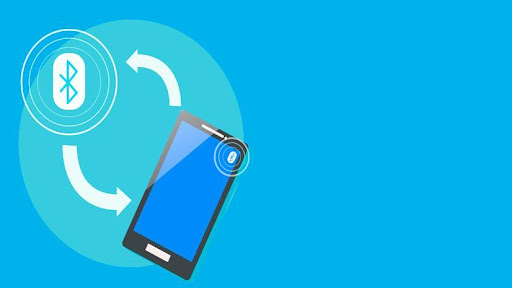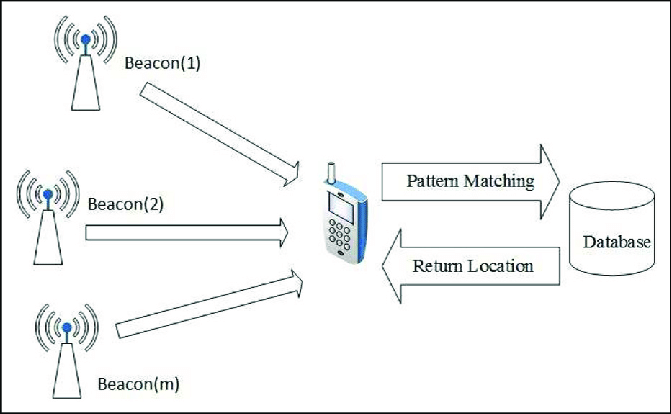
Since GPS satellite technology became widely available in the late 1990s, positioning systems have played an increasingly important role in people's lives. Almost, everyone now owns a device with positioning capabilities, whether it's a mobile phone, tablet, GPS tracker, or smartwatch with built-in GPS.
Though GPS transformed outdoor positioning, we're now moving on to inside positioning, which will require new technologies. Because the signal is attenuated and scattered by roofs and walls, satellite-based location does not function indoors or on narrow streets. Other technology standards, thankfully, have arisen that enable indoor positioning, albeit with a new form of infrastructure.
Indoor positioning is useful for a variety of purposes for individuals and organizations. From making travel easier to locate what you're looking for, delivering/receiving targeted location-based information, enhancing accessibility, and gaining useful data insights, there's a lot more.
What Is BLE Indoor Positioning And How Does It Function Properly?
The User's Position
Indoor location relies heavily on BLE beacons. The device can detect when it is in the range of a Bluetooth beacon and even determine its position if it is in reach of more than two beacons using this technology.
The original BLE-based positioning prototypes could only detect which beacon was closest to the user. Hence, today we can combine proximity data from multiple beacons to place the consumer in 2D space on an indoor map. The accuracy varies depending on the situation, but it can be as accurate as 1.5 meters.
This technology is improving, and it now uses magnetic field sensing, gyroscopes, accelerator meters, and Near Field Communication circuits to provide exact positioning.

Apps From The Customer/Standpoint Visitors
This technology is used by customers and visitors for navigation and receiving location-based content. They do it by installing an app on their smartphone, tablet, or watch. Indoor mapping and location-specific content distribution are common features of the app.
The Viewpoint Of The Organization - Content Management System (CMS)
BLE positioning systems are used by businesses to deliver a better experience for their visitors or customers. Almost any form of organization can profit from location-based technologies. For instance:
- Museums can provide visitors with location-based narrations accompanied by a map of the venue, allowing for navigation and participatory learning.
- Indoor positioning systems can be utilized in retail to provide customers with location-based marketing, navigation, and other location-based content.
- Location-based data, such as turn-by-turn navigation, could be beneficial to airports and hospitals.
Organizations utilize the CMS online platform for managing their content, floor maps, and Bluetooth beacon positions. A content management system(CMS) is often a hosted software system that maintains track of every piece of material in the app that users or customers access. Organizations need a fully working CMS because it offers them full control over the material that consumers see.
UWB Vs. BLE:
Low power, low cost, and effectiveness as asset tracking systems are all characteristics shared by BLE and UWB. UWB, on the other hand, has significantly more precision than Bluetooth. This owes in part to UWB's exact distance-based method of location determination.
BLE commonly locates devices using RSSI, which has a much lower rate of precision because it is reliant on whether a device transmits a weak or strong signal about a Bluetooth beacon or sensors.
In comparison to UWB, BLE has a substantially lesser range and data rate. Bluetooth, on the other hand, is a widely used RF technology that can be integrated into a variety of indoor settings using flexible hardware, such as BLE beacons, sensors, and asset tags.
Benefits:
Low-Cost, Low-Power
- BLE is an appropriate RF standard for BLE sensor, Bluetooth beacon, and asset or personnel tag because of its low energy consumption and cost-effective technology.
Ease of Deployment
- BLE offers simple, easy-to-deploy solutions and versatile hardware alternatives that can be used on or off the network and seamlessly incorporate into your Bluetooth ecosystem.
Adaptable Technology
- Extend the technology's capabilities to support a variety of location-aware applications, including asset monitoring, Bluetooth device identification, indoor positioning and navigation, proximity applications, and more.
Some Ways Of Using Bluetooth Beacons:
- Stationary Beacons, Roaming Mobile Devices, And Traveling Asset Beacons Are Used In Tandem.
In some cases, tracking the position of assets within a workspace is desirable, yet mounting permanent BLE receivers is impractical. Without a device to detect asset location and communicate data back to a cloud service, asset monitoring becomes difficult. It can be avoided by piggybacking on a mobile device's location.
Bluetooth beacon is placed throughout a facility, and a mobile app is installed to track where each device is at all times, similar to the previous strategy. The app can detect adjacent assets by marking them with beacons and assigning them to the same position as the device based on nearby fixed beacons.
- Combining A BLE Technology With GPS, Wi-Fi, Or Geo-Fencing Is The Preferred Technology.
Indoors, BLE beacons offer substantial advantages for tracking people and assets. Integrating this technique with more conventional location services, like GPS, or Wi-Fi but still has advantages. Assets with embedded beacons can be used to identify items, and then further mobile location technologies can be utilized to give context.
Connecting a Bluetooth beacon to the inside of the vehicle is used to track the whereabouts of mobile workers while they drive. It's also utilized to track asset location within an office building utilizing Wi-Fi enabled client tracking and asset tagging beacons.
Summing Up!
In a nutshell, we can say that Bluetooth will remain a popular RF technology for wireless devices, short-range communication, and indoor positioning. The proliferation of Access Points with incorporated Bluetooth low energy beacon and sensor systems out of the box, as well as more, equipped consumer wearable, IoT devices, asset tracking tags, employee badges, and customer Bluetooth trackers, will almost certainly continue and grow.



